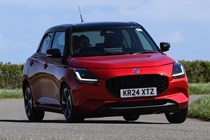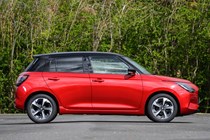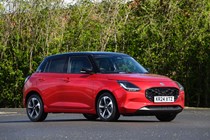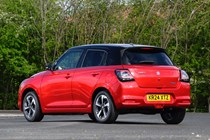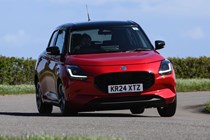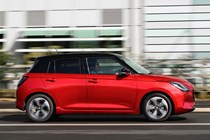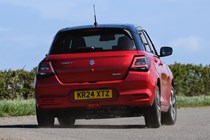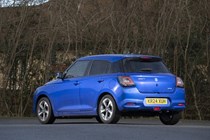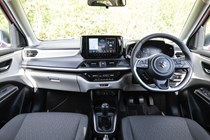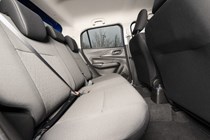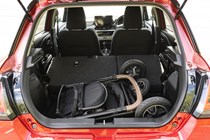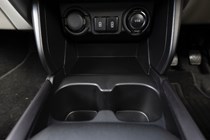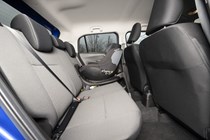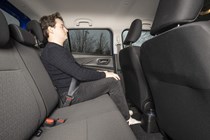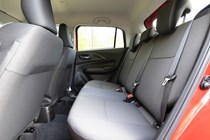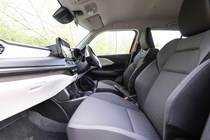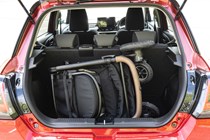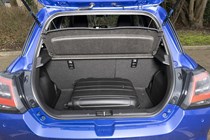Suzuki Swift engines, drive and performance
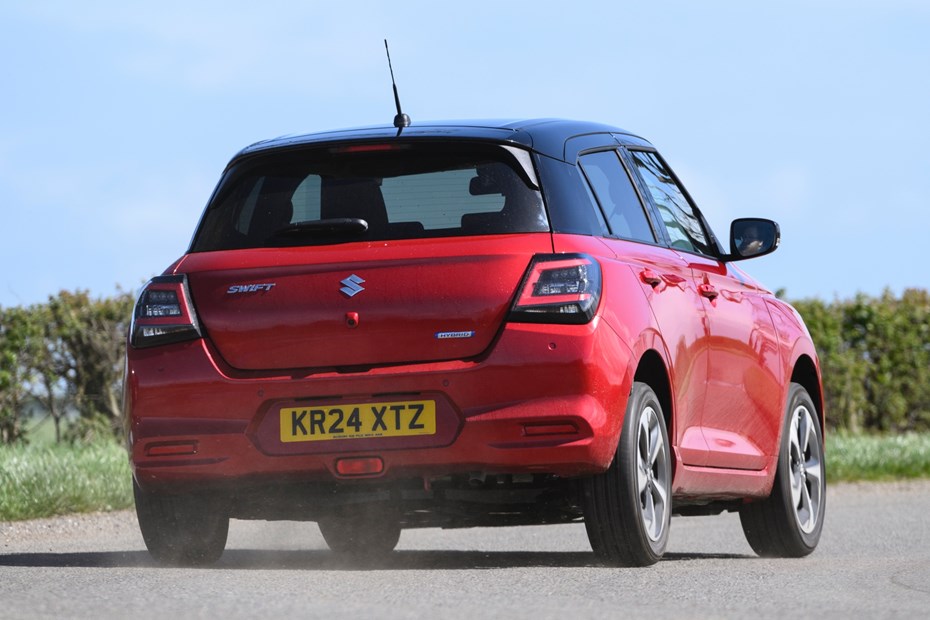
- All Swifts use the same engine
- Engine needs to be worked hard to keep up with traffic
- Nippy handling and manual gearbox are appealing
Petrol engine
There’s only one engine available in the Swift, a 1.2-litre three-cylinder mild hybrid petrol unit. Power is down two horsepower from the previous Swift at 81hp, while torque is slightly up at 112Nm. This all translates into a rather uninspiring 0-62mph time of 12.5 seconds, and a top speed of 103mph in manual form.
The Swift makes do with a five-speed manual gearbox as standard, which sends the power to the front wheels. It’s nice to see Suzuki still committed to the manual gearbox when more and more small cars (the MG3 Hybrid+ and MINI Cooper to name two) have moved to automatic only. It’s not the slickest manual gearbox we’ve ever used – it feels a little slack and padded but it’s a good way of getting the most from the pedestrian power figures.
If you prefer an automatic, you can option a continuously variable transmission (CVT). We wouldn’t bother with it. It might make the Swift a tad quicker to 62mph – 11.9 seconds – but the trade-off is worse fuel economy to the tune of nearly 4mpg.
No matter what option you go for it’s not a quick car. It’s nippy enough around down, but the moment you head onto the motorway or even a big hill, you need to keep the throttle floored. There’s not a lot of oomph from the engine and lots of gear changes are required to get the most from it on slip roads.
What’s it like to drive?
- Slow but still the enthusiast choice
- Steering is light and precise
- Ride quality has taken a knock
The Swift has built a big reputation for its sweet driving experience. Low weight, light steering and a well-tuned suspension set-up to make it one of the most enjoyable small cars to drive. It can even held a candle to the mighty Ford Fiesta, falling just short for overall driving manners.
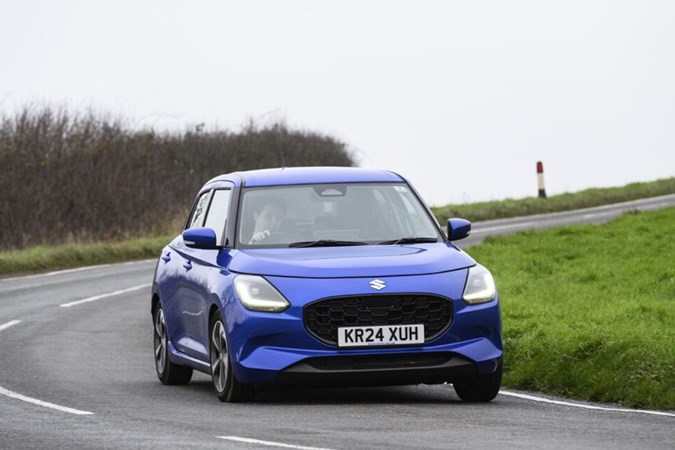
The new Swift remains a fun little car to drive, and we think it’s the enthusiast’s choice in the small car market now the Fiesta has been discontinued. As the car is still based on the same underpinnings as the previous generation version, that car’s neat and tidy handling characteristics have carried over. The suspension on the new Swift has been adjusted to reduce body in corners while the rear on two-wheel-drive models has been fettled so the wheels can follow the road surface with more easily.
Overall, the changes have worked. Coupled with the Swift’s low weight, it feels less leaden than the likes of the SEAT Ibiza. There’s an enjoyable chuckability and balance to the car that makes it a joy to drive hard despite displaying a fair bit of body roll. The Swift darts eagerly through corners but never feels twitchy or unsettled – the lack of power certainly has a part to play in this. The lightweight construction does have a downside – the Swift is not a fan of crosswinds.
Around town the Swift is really in its element. The light steering and low weight suit darting around urban areas perfectly. You’ll find yourself stirring the manual gearbox a lot so it’s not the most effortless car to drive, but it is a rewarding and enjoyable experience. It’s nippy and nimble as any good supermini should be.
The ride has lost a step against the old Swift though, it’s too soft and bouncy. The standard 16-inch alloys clatter through potholes or any other road surface imperfection. The ride never settles properly which is a huge shame and the clearest example of the bargain-basement price tag.


